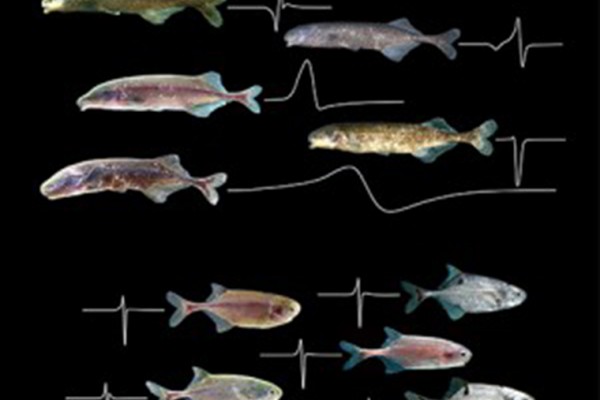Fish that have their own fish finders
African fish called mormyrids communicate by means of electric signals. Fish in one group can glean detailed information from a signal’s waveform, but fish in another group are insensitive to waveform variations. Research at Washington University in St. Louis has uncovered the neurological basis for this difference in perception.
‘Flicker: Your Brain on Movies’
Why do so many of us cry at the movies? Why do we flinch when Rocky Balboa takes a punch? What’s really happening in our brains as we immerse ourselves in the lives being acted out on screen? These are the questions that Washington University in St. Louis neuroscientist Jeffrey M. Zacks, PhD, explores in his new book, “Flicker: Your Brain on Movies.”
Hope for those with social anxiety disorder: You may already be someone’s best friend
Making friends is often extremely difficult for people with social anxiety disorder and to make matters worse, people with this disorder tend to assume that the friendships they do have are not of the highest quality. The problem with this perception, suggests new research from Washington University in St. Louis, is that their friends don’t necessarily see it that way.
Keeping hands where you can see ’em alters perception, study finds
Image courtesy of Richard AbramsTo see objects better, take matters into your own hands.WUSTL psychologists have shown that to see objects better, you should take the matter into your own hands. Humans are compelled to closely analyze objects near our hands, they suggest, because we have a non-conscious, almost reflexive need to figure out how to handle nearby items or to provide protection against them. Recognizing that the location of your hands influences what you see is a new insight into the wiring of the brain, one that may even offer scientific support for California’s new ban on driving with hand-held cell phones.
El Hombre vs. The Babe
Albert Pujols took part in laboratory tests similar to those conducted on Ruth in 1921.
St. Louis Cardinals slugger Pujols gets Babe Ruth test at Washington University
Daniel Stier / GQ, September 2006El Hombre vs. The BabeBaseball purists, especially those of Yankee allegiance, might argue that St. Louis Cardinals homerun-hitting superstar Albert Pujols is simply not in the same league as legendary New York Yankees slugger Babe Ruth. Science may never settle that argument, but researchers at Washington University in St. Louis can offer some sense of how Pujols stacks up to the Babe in terms of skills necessary to hit the long ball. Pujols visited WUSTL to take part in a series of lab tests similar to those conducted on Ruth in 1921.
Removing the shadow of suspicion
StewartCan Martha Stewart regain the trust of her customers or could Enron’s former chief Ken Lay get a new job under the clouds of suspicion left in the wake of their legal problems? It depends upon the match between how they respond to the allegations and the extent to which the alleged offense is perceived to involve their integrity or their competence, according to a recent study by Washington University in St. Louis professor Kurt T. Dirks and three colleagues.
Out of sight
Researchers discovered activity in a part of the brain called the extrastriate body both when subjects viewed body parts and when they pointed to an object.Although we don’t often think about it, the brain is a very complicated place. Even the simple act of pointing at an object requires an intricate network of brain activity. Scientists traditionally thought this network included a one-way “information highway” between the brain’s visual system and its motor and sensory systems, but research at Washington University School of Medicine in St. Louis now challenges that long-held theory. The study demonstrates that the brain’s visual system is responsible not only for seeing and perceiving objects outside the body, but also is involved when individuals sense and manipulate their own bodies.
Researchers pinpoint brain areas that process reality, illusion
The first time you don a new pair of bifocals, what you perceive visually and what your hand does may be very different.Marvin Gaye wailed in the ’60s hit “Heard it through the Grapevine,” that we’re supposed to believe just half of what we see. But a new collaborative study involving a biomedical engineer at Washington University in St. Louis and neurobiologists at the University of Pittsburgh shows that sometimes you can’t believe anything that you see. More importantly, the researchers have identified areas of the brain where what we’re actually doing (reality) and what we think we’re doing (illusion, or perception) are processed.

